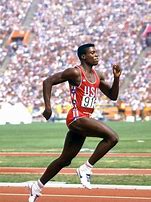A great article by Sean Ingle in today’s Guardian recalling ‘that race’ in 1988 which forever tarnished the reputation of the Olympic Games in general and athletics in particular.
I was in the Maze prison – cellular – having move from the ‘Compounds’ a year earlier and had, like most of the rest, been enthralled with this potential clash between Carl Lewis and Ben Johnston.
For some reason, I was never a fan of Lewis – he was articulate, talented, confident, photogenic – he had it all, but there was something about him I couldn’t take to.
Johnston seemed to be almost the opposite of Lewis, but they had one thing in common – they could sprint and this final was going to be about the two of them.
What a race it was – until the drug test a couple of days later showed Johnston had tested positive for Stanozolol.
I have to say I was devastated. Johnston power was awesome and a wonder to watch and his shame seamed to be magnified with the images that followed.
Little did I know of what was to follow.


Thirty years ago today, Ben Johnson crouched on his starting blocks before the 100m Olympic final in Seoul, waiting. A gun went off. And he went supernova. Even now there is a visceral thrill watching him burn off his rivals from between 30 to 70 metres – those tiny legs whirring at an almost impossible velocity, as if the race replay is being played at double speed, while they strain in vain to catch him – as he lifts one finger in the air in triumph.
After his lap of honour, Johnson was asked which he treasured more: his gold medal or a world record of 9.79 seconds. “The gold medal,” he replied. “Because they can’t take that away from you.” Read more »















